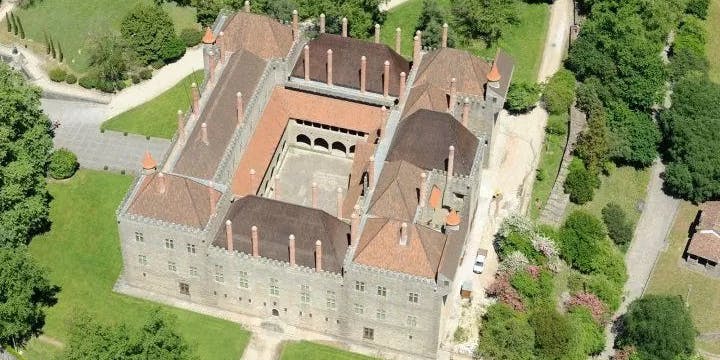Versão portuguesa aqui.
GPS 41.44658952982598, -8.29128718230799
The Palace of the Dukes of Bragança (typically known as just the Palace of the Dukes) is a national palace located in the parish of Oliveira, São Paio and São Sebastião, in the city of Guimarães.
The Palace of the Dukes of Bragança was built in the 15th century by D. Afonso (illegitimate son of King D. João I and D. Inês Pires Esteves), 1st Duke of the House of Bragança and 8th Count of Barcelos, at the time of the his second marriage to D. Constança de Noronha (daughter of D. Afonso, Count of Gijón and Noronha and D. Isabel, Senhora de Viseu). Essentially inhabited during the 15th century, the following centuries saw progressive abandonment and consequent ruin, motivated by several factors, which worsened until the 20th century. Between 1937 and 1959, a wide and complex reconstruction was carried out based on a project designed by the architect Rogério de Azevedo.
The Paço dos Duques is currently a service dependent on the Northern Regional Directorate of Culture and includes the Museum (1st floor), a wing dedicated to the Presidency of the Republic (main façade, 2nd floor) and a vast area dedicated to various cultural initiatives (on the ground floor).
The Palace of the Dukes of Bragança has been classified as a National Monument since 1910.
History

It was built in the 15th century on the initiative of Afonso I of Bragança. The Burgundian style of this palace reflects his tastes, acquired on his travels in Europe, although its current appearance was controversially recreated during the Estado Novo.
During part of the 16th century, the Palace was still used as the residence of the Dukes of Bragança, after which it gradually entered a phase of abandonment and consequent ruin.
In 1807, during the French invasions, it was adapted into a military barracks, a role it held until 1935.
On June 25, 1959, it was transformed into the official residence of the President of the Republic in northern Portugal, and on August 26 of the same year it was opened to the public as a museum.
Collections In the museum stand out tapestries (Flemish and French), oriental rugs, furniture, Chinese porcelain, paintings, such as the Pascal Lamb, attributed to Josefa de Óbidos or the portrait of D. Catarina de Bragança.
Gallery












Full list of Geochaching below:
